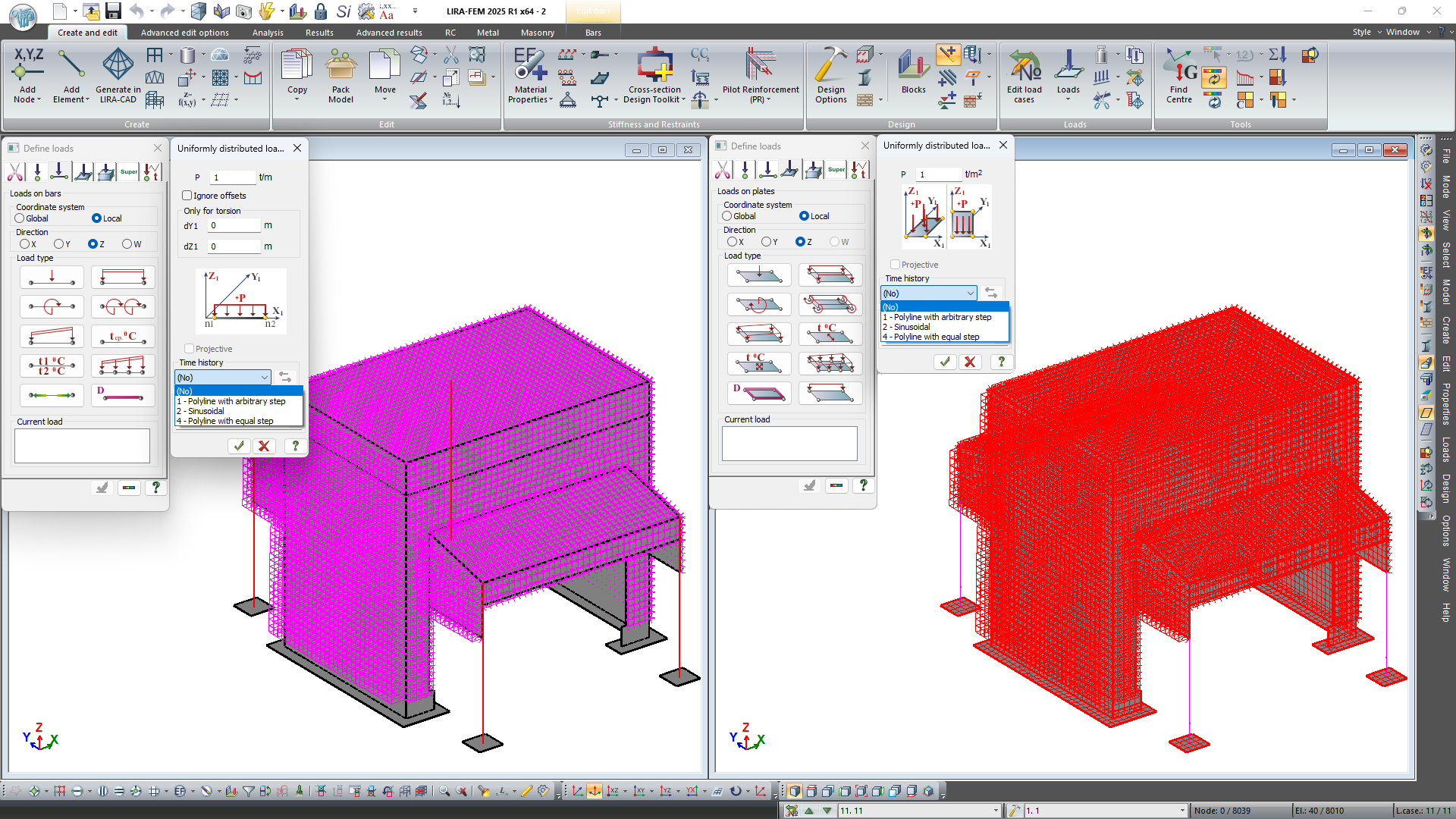VERSION HISTORY
LIRA-FEM
Time history analysis
The new option to define the dynamic uniformly distributed load on bars and plates for time history analysis. The following diagrams for such loads are implemented: piecewise linear load (broken) with arbitrary step; sinusoidal load; piecewise linear load (broken) with uniform step.
Now it is possible to carry out analyses using the direct dynamic method (Time History Analysis system) for several dynamic load cases within one design model. Moreover, an algorithm has been implemented to remove restrictions on the number of integration steps. It enables the user to evaluate different scenarios of dynamic load and carry out analyses with higher accuracy, which is especially important for analyses of buildings and structures on earthquake loads, air shock wave effects, etc.
The user could also carry out an analysis on progressive collapse within a single design model for several scenarios of local failures in elements of structure. The analyses are carried out by the dynamic method of direct integration of the equations of motion in time (Time History Analysis system) in linear and nonlinear statement. This method allows the user to take into account damping effects.
New option to calculate the temperature field for problems with transient heat transfer analysis for several scenarios of time-varying temperature within a single design model.
New option to determine mass (α) and stiffness (β) proportionality constants to account for Rayleigh damping by specifying frequencies and damping coefficients.




